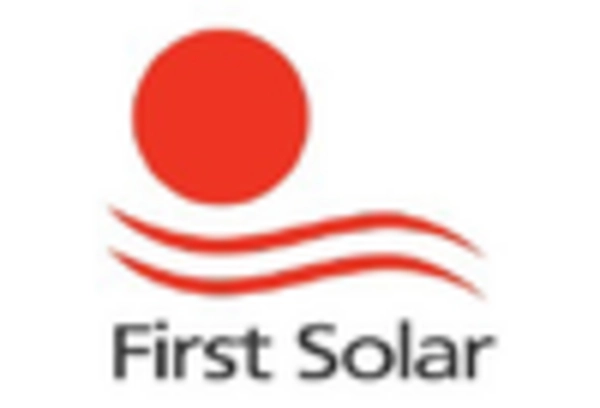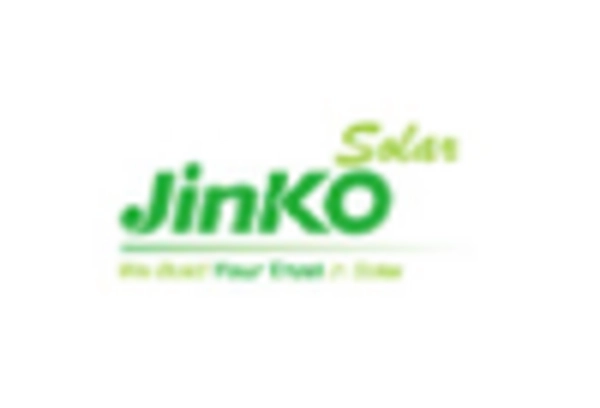Government Incentives and Policies
Government incentives and policies are significantly influencing the Flexible Pv Cell Market. Many governments are implementing favorable policies to promote renewable energy adoption, including tax credits, subsidies, and grants for solar technology installations. In 2025, it is estimated that such incentives will contribute to a 20% increase in the installation of flexible PV systems. These supportive measures not only lower the financial barriers for consumers and businesses but also encourage research and development in flexible solar technologies. Consequently, the market is likely to experience accelerated growth as these policies foster a conducive environment for innovation and investment.
Rising Demand for Renewable Energy
The increasing demand for renewable energy sources is a primary driver for the Flexible Pv Cell Market. As nations strive to meet energy needs sustainably, the adoption of solar energy technologies has surged. In 2025, the renewable energy sector is projected to account for over 30% of total energy consumption, with solar energy being a significant contributor. Flexible photovoltaic cells, known for their lightweight and adaptable nature, are particularly appealing for various applications, including building-integrated photovoltaics and portable devices. This trend indicates a shift towards cleaner energy solutions, thereby enhancing the market potential for flexible PV cells.
Integration with Smart Technologies
The integration of flexible photovoltaic cells with smart technologies is emerging as a crucial driver for the Flexible Pv Cell Market. As smart homes and cities gain traction, the demand for energy-efficient solutions is escalating. Flexible PV cells can be seamlessly integrated into various smart devices, enabling energy generation in a compact form. By 2025, it is anticipated that the market for smart energy solutions will exceed USD 100 billion, with flexible PV cells playing a pivotal role. This synergy between flexible solar technology and smart systems not only enhances energy efficiency but also promotes the adoption of renewable energy sources.
Innovations in Manufacturing Processes
Innovations in manufacturing processes are transforming the Flexible Pv Cell Market. Advances in materials science and production techniques have led to the development of more efficient and cost-effective flexible solar cells. For instance, the introduction of roll-to-roll printing technology has significantly reduced production costs and time, making flexible PV cells more accessible. As of 2025, the market is expected to witness a compound annual growth rate of approximately 15%, driven by these technological advancements. This evolution in manufacturing not only enhances the performance of flexible PV cells but also broadens their application scope, further stimulating market growth.
Growing Awareness of Environmental Impact
Growing awareness of environmental impact is driving the Flexible Pv Cell Market. As consumers become more conscious of their carbon footprints, there is a notable shift towards sustainable energy solutions. Flexible photovoltaic cells, which offer a lower environmental impact compared to traditional energy sources, are increasingly favored. In 2025, it is projected that the market for eco-friendly technologies will reach USD 200 billion, with flexible PV cells being a key component. This heightened awareness not only propels demand for flexible solar solutions but also encourages manufacturers to innovate and improve the sustainability of their products, thereby enhancing market dynamics.


















Leave a Comment